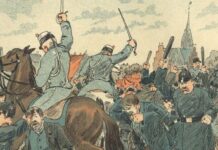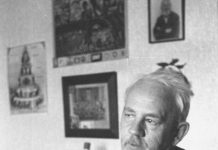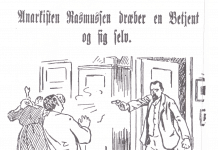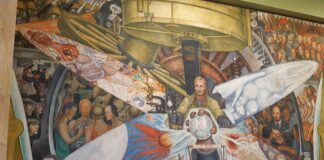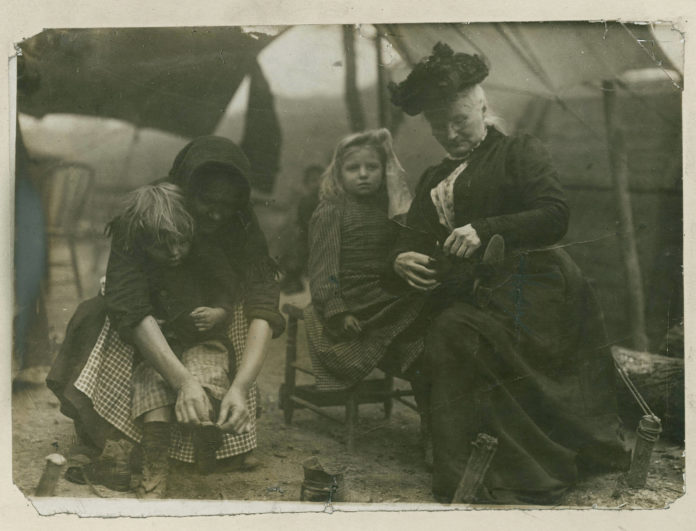
Socialistisk Biblioteks Tidslinje med links til begivenheder og personer i 1830.
Se også Index over personer, organisationer/partier og værker (som bøger, malerier, mm.), steder, begivenheder, mv., der er omtalt på hele Tidslinjen, titler og indhold på emnelisterne osv.
1. maj 1830
Den amerikanske arbejderorganisator Mother Jones (Mary Harris Jones) påstod at være født denne dag, i Cork, Irland – sandsynligvis dog 30. august 1837 (dør helt sikkert 30. november, 1930 i Silver Spring, Maryland, USA).
Se:
- Jones, Mary Harris (Leksikon.org).
- Mary Harris Jones (Wikipedia.org).
- The Autobiography of Mother Jones (1925) (Marxists Internet Archive).
Mother Jones: US labour pioneer (Socialism Today, Issue 210 July/August 2017). “Linda Taaffe looks at her life and times.”
Mother Jones: The woman. By Elliot J. Gorn (Mother Jones, May-June 2001). “Mary Harris Jones, this magazine’s namesake, crafted a persona that made her a legend among working people. So why is so little about her remembered today?”
Unlikely agitator. By Julie Greene (In These Times, August 6, 2001). Review of Elliot J. Gorn, Mother Jones: The Most Dangerous Woman in America (Hill and Wang, 2001, 408 p.).
29. maj 1830
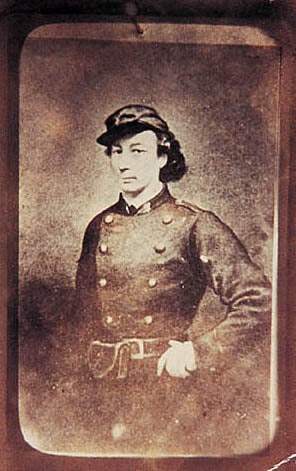
Den franske revolutionære, kvinderetsforkæmper og kommunard Louise Michel fødes i Vroncourt-la-Côte, departementet Haute-Marne, Frankrig. (Dør 10. januar 1905 i Marseille).
Se:
- Michel, Louise (Leksikon.org).
- Louise Michel (Wikipedia.dk). Kortere intro med links.
- Louise Michel (Sorte Fane Blog). Kort biografi med link til billedserie + Tekster af L.M. på dansk.
- Louise Michel (Wikipedia.org). Længere artikel med links.
- Louise Michel (Anarchy Archive) med Biography – Bibliography – Collected Works – Graphics – Commentary.
- Louise Michel Archive, 1830-1905 (Marxists Internet Archive)
- Louise Michel (International Institute of Social History). With biography and documents.
- Louise Michel (LibCom.org)
Louise Michel – den røde jomfru fra Montmartre. Af Margit Andersen (Magasinet Arbejderen, nr.1, februar 2021). “Louise Michel var en oprører, som fra den første dag var aktiv i Pariserkommunen.”
Louise Michel: the revolutionary woman who led the Paris Commune (Counterfire, March 8, 2021). “On International Women’s Day and ahead of the 150th anniversary of the Paris Commune, Jacqueline Mulhallen looks at the revolutionary life of Louise Michel.”
Rallying Point. By Kim Harrison (Socialist Review, Issue 290, November 2004). Review of Louise Michel, edited by Nic Maclellan (Ocean Press, 2004, 118 p.) (Rebel Lives). “For me, the beauty of this book lies in the different voices within it, particularly Michel’s own.” See the book online at LibCom.org.
The woman who built barricades: Louise Michel and the Paris Commune. By Paul Foot (Socialist Worker, No. 2670, 9 October 2004; online at Marxists Internet Archive).
Louise Michel and the Commune. By Paul Foot (SWP Recording; YouTube.com, 1:25:38 hour). Recorded speech.
Se også/see also:
Women in the Paris Commune. Chapter 3 in Tony Cliff: Class Struggle and Women’s Liberation: 1640 to the present day (Bookmarks, 1984, p.34-45; online at Marxists Internet Archive).
Linkboxen Pariserkommunen 1871 (Socialistisk Bibliotek).
27. juli 1830
Indskrænkning af stemmeret og pressefrihed starter Julirevolutionen, (27.-30. juli) der efter 3 dage tvinger kongen Karl d. 10 bort, men finanskredse får indsat Louis Philippe (Borgerkongen, “Kong Pære”).
Revolutionen fører også til den belgiske frihedskrig fra Holland, oprør i Italien og Polen og fik stor betydning for borgerligt liberale stemmeretsbevægelser i Europa, organistorisk og ideologisk.
Se:
Julirevolutionen (Leksikon.org).
Julirevolutionen (Denstoredanske.dk).
Glossary of events: France – 1830 (Marxists Internet Archive).
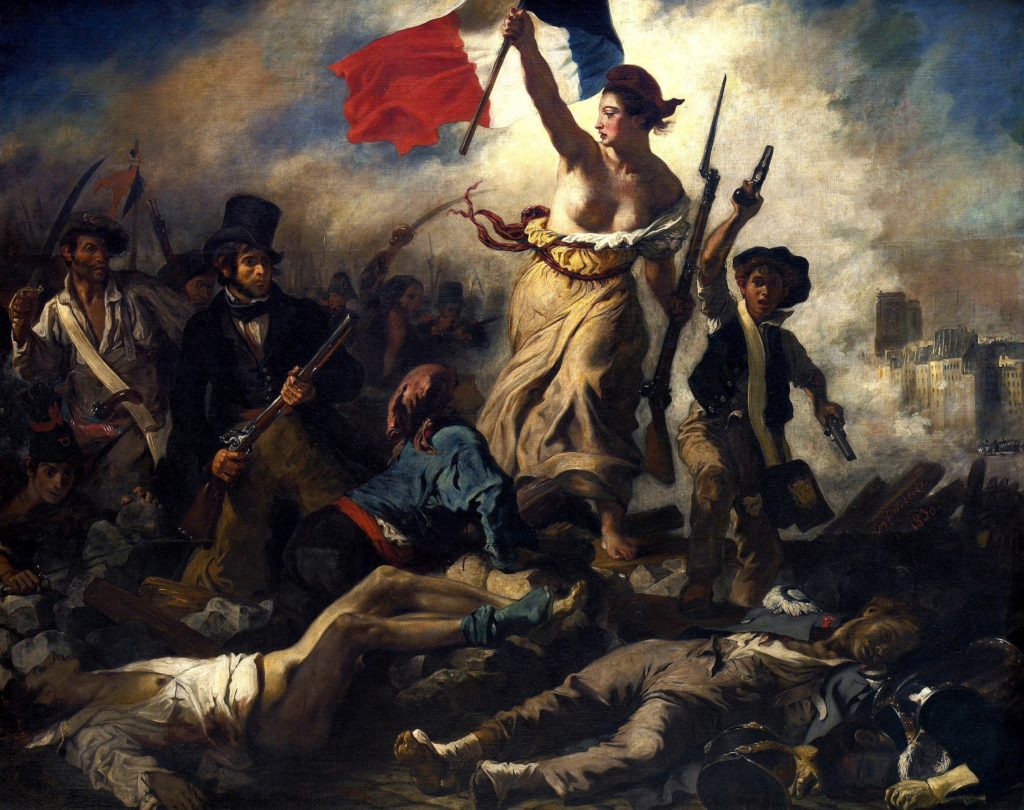
Maleri 1830 af Eugéne Delacroix (KunstOnline.dk)
Se også: The paintings of Eugéne Delacroix at London’s National Gallery. By Ross Mitchell and Paul Mitchell (World Socialist Web Site, 26 April 2016)
15. september 1830
Jernbanestrækningen mellem Liverpool og Manchester åbnet, første intercitytog og første strækning med persontrafik.
Se:
Liverpool and Manchester Railway (Wikipedia.org).
Jernbane (Denstoredanske.dk).
25. november 1830
De engelske såkaldte Swing-rioters opstand, bønder og arbejder i kamp for minimumsløn.
Se:
Swing Riots (Wikipedia.org).
Rural unrest in the 1830s: the ‘Swing’ riots (A Web of English History).
When Captain Swing threatened our rulers. By Sadie Robinson (Socialist Worker, Issue 2207, 26 June 2010).
Tolpuddle and Swing: The flea and the elephant (Bristol Radical History Group, May 2009).
The Swing Riots. By Troy Southgate (Synthesis, 2003).
The Swing Riots around Burbage (Burbage, Wiltshire’s Homepage).
Captain Swing in Dorset. By Cyril Coffin (The Dorset page; History, 1999).
Captain Swing. By Eric Hobsbawm and Georg Rude (Norton, 1975, 400 p.) (online på Internet Archive).
Se også:
The making of the English working class. By E.P. Thompson (Victor Gollancz, 1963) (online i uddrag på Google Books)
Se også på Socialistisk Bibliotek:
Tidslinjen: marts 1811 om ludditterne.
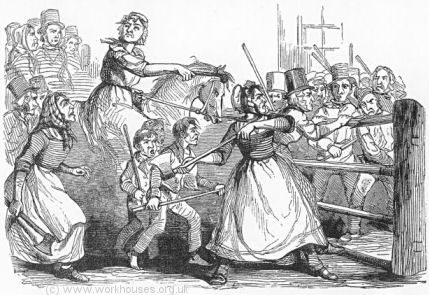
29. november 1830
Den nationale opstand i Polen mod russisk overherredømme starter.
Se:
Novemberopstanden (Denstoredanske.dk).
Novemberoppstanden (Wikipedia.no). Norsk intro.
November Uprising (Wikipedia.org). Længere engelsk.
13. december 1830
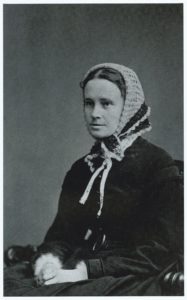
Mathilde Fibiger fødes i København – forfatter til Danmarks første feministiske skrift, Clara Rafael: 12 breve. Udgivne ved Johan Ludvig Heiberg (december, 1850). Online på Arkiv for Dansk Litteratur.
(Dør 7. juni 1872 i Århus).
Litteratur:
Tine Andersen & Lise Busk-Jensen: Mathilde Fibiger – Clara Raphael: Kvindekamp og kvindebevidsthed i Danmark 1930-1870 (Medusa, 1979, 284 sider).
Se:
- Mathilde Fibiger (Wikipedia.dk).
- Mathilde Fibiger (Kvindelige fyrtårne i dansk litteratur, Litteratursiden.dk). Biografisk artikel med udvalgt litteratur.
- Fibiger, Mathilde Lucie (Dansk Kvindebiografisk Leksikon)
- Identitet og kvindekamp – Mathilde Fibiger. Af Sune Auken (Dansk litteraturs historie, bd. 2, side 552-562)
- Mathilde Fibiger (Gravsted.dk). Mini-biografi med foto af gravsted, sten med vers.
- Mathilde Fibiger (Arkiv for Dansk Litteratur). Med forfatterportræt og titelliste over tekster i arkivet.
Et Brev fra Mathilde Fibiger (pdf). Af E.E. Jensen (Personalhistorisk Tidsskrift, årgang 73, 13. række, 1. bind, hæfte 3-4, 1952, side 195–196; online på Tidsskrift.dk). Til Hr. F.Bayer, Blaagaards Folkehøjskole: “… i Bevidstheden om min totale Afmagt til at tjene den [sagen] … lægger Beslag paa mine Kræfter, min Tid, mit moralske Mod … Min Virksomhed ligger jo netop indenfor Emancipationens Omraade, og om Forfatterinden end er død, saa lever jo Arbeidersken, hvis tause Tilslutning i det mindste er Vidnesbyrd at hun arbeider i Aandens Tjeneste …”
Se også:
Goldschmidts anmeldelse af “Clara Raphael”, side 113-130. (-i: En brevveksling om kvindens stillling i samfundet. 1851. Af Gotfred Appel [på omslaget: Lodovica de Bretteville og Meir Goldschmidt] (Futura, 1979). P.t. ikke online.
Grundtvigs anmeldelse: (-i: Af Danskeren IV, 1851, nr. 13, side 288-93) “… en lykkelig lille Bog”.
Ormen i den borgerlige selvtilfredshed. Pauline Worm. Af Lise Busk-Jensen. (side 244-260 -i: Oprørere. Skæbnefortællinger om danmarkshistoriens tolv største rebeller. red.: Morten Petersen. Aschehoug, 2006, 368 sider). Om Worms forhold til såk. Clara Raphael-fejde, især side 249-53.
17. december 1830
Den sydamerikanske frihedshelt Simon de Bolivar dør i Santa Marta, Columbia, (født 24. juli 1783 i Caracas, Venezuela), leder af uafhængighedskrigene fra Spanien for en række stater i Sydamerika.
Se på Socialistisk Bibliotek:
Linkboxen: Simon Bolivar (1783-1830)
















